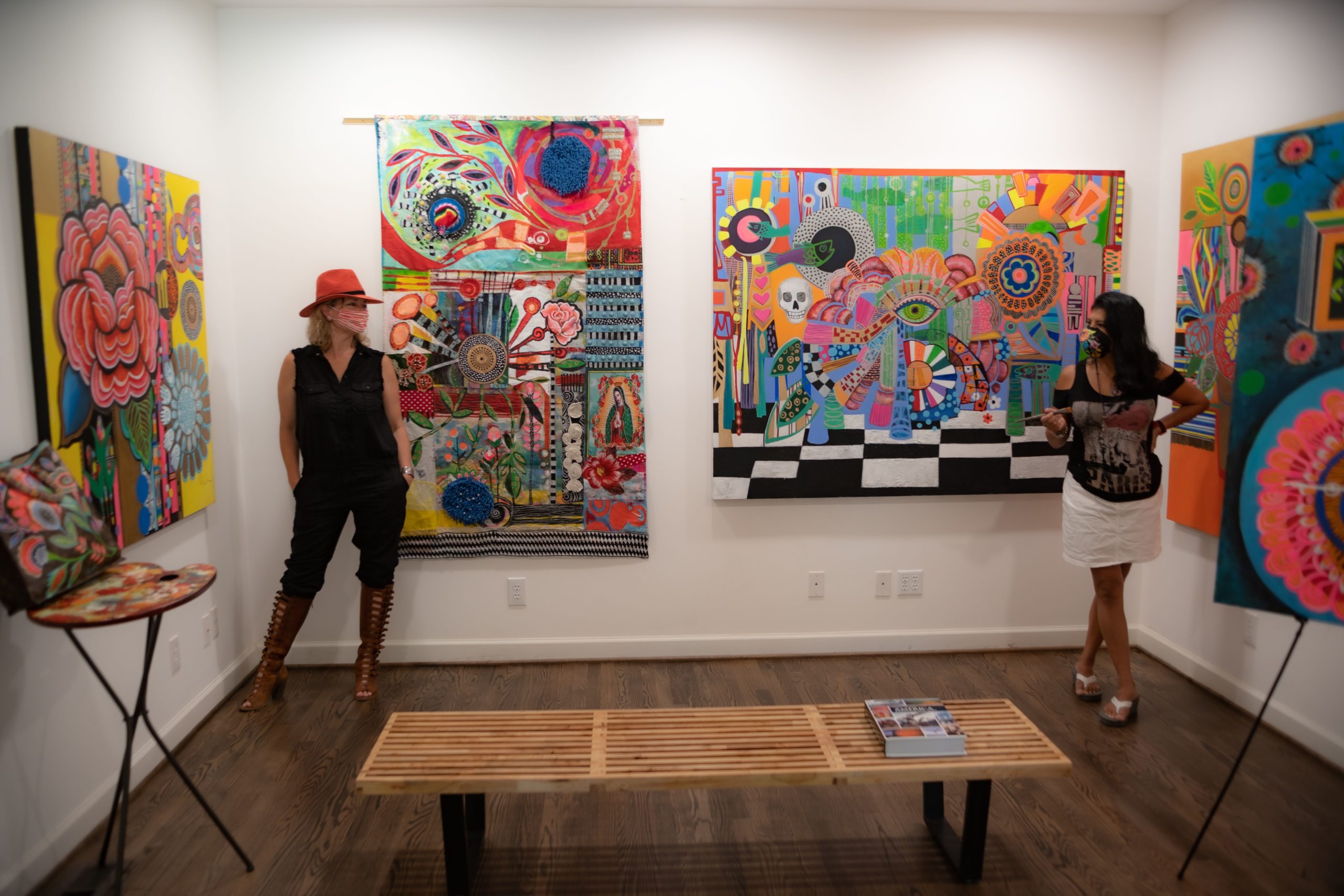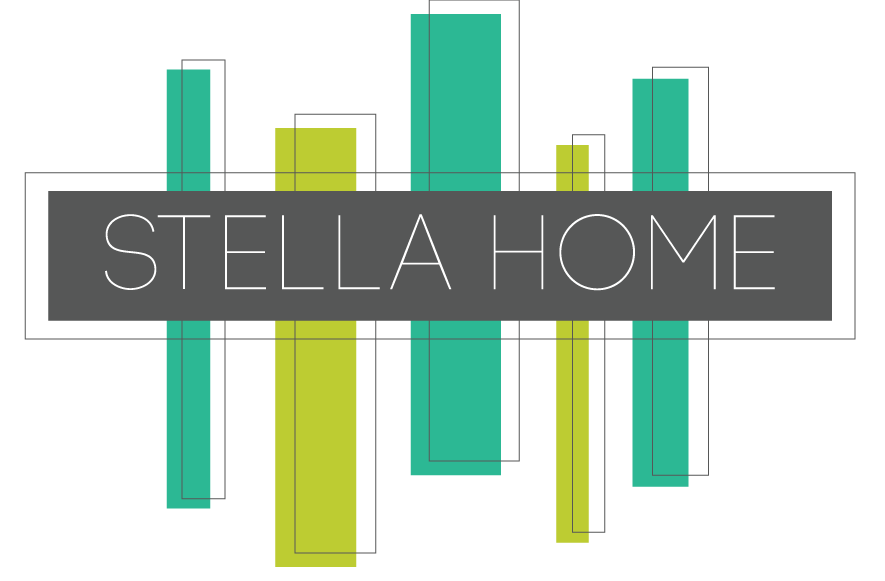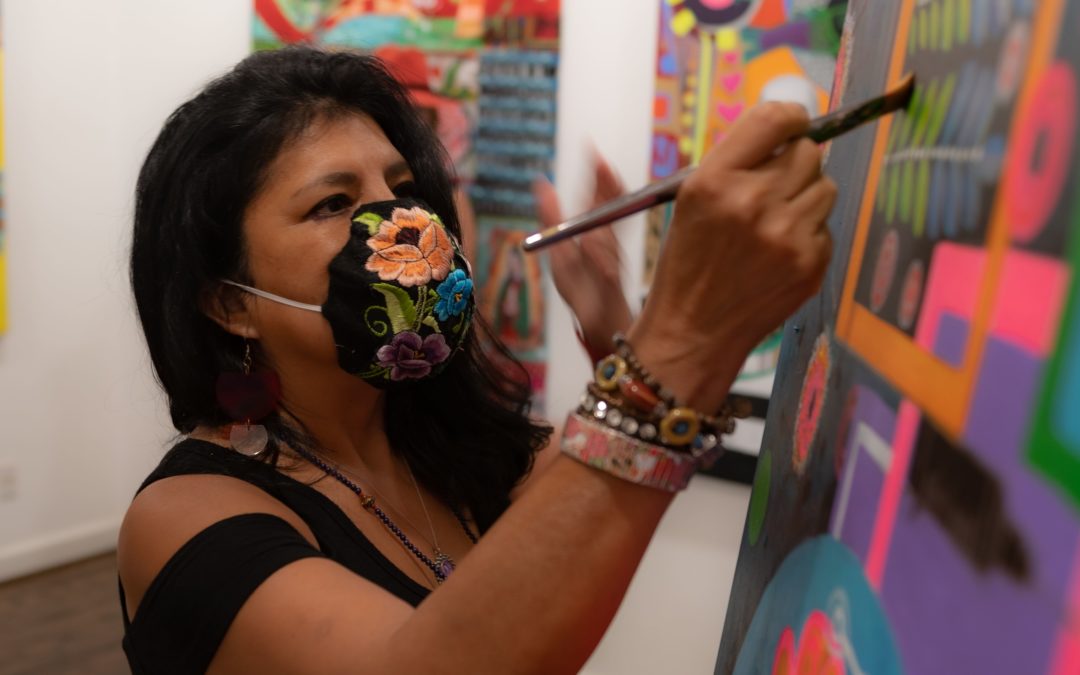There I was walking down N. Davidson street when something in the window of Ruby’s caught my eye. Now, in all honesty, it wasn’t that unusual for something in Ruby’s window to catch my eye. However, this piece grabbed my eyeballs, pulled them out of my skull, and shook them like a pair of dice. I had to have it. The piece was signed in a wild, strong, clear black font; Rosalia. Rosalia Torres-Weiner.
Rosalia is an artist, activist and community leader in Charlotte. Her art captures the themes, colors and rich symbolism of her native home of Mexico. Her passionate love of color and movement is just plain intoxicating. You can feel her deep devotion and pride for her Mexican heritage. It’s infectious.
It’s also art for such a time as this and we are lucky to have her as part of Charlotte’s art scene.
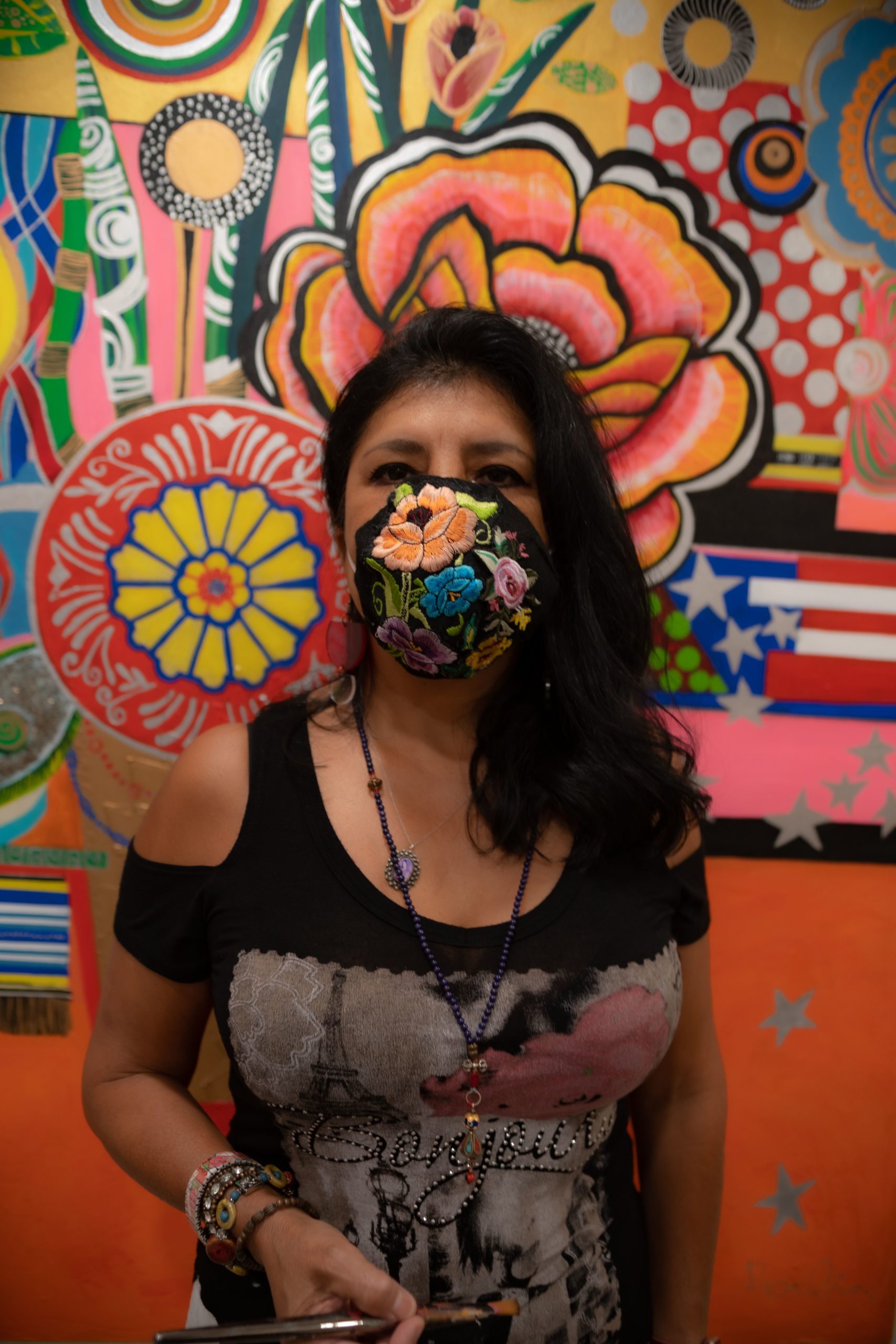
Rosalia said, “In 2010, I shifted the focus of my work from commercial art to art activism, after witnessing the repeated injustices and dysfunction of our immigration system.”
The first time I met Rosalia was about a week after I purchased that must-have painting.
I was exploring “nooks and crannies” (insert blog reference from SWH about nooks and crannies) when I came across an open door with the smell of paint wafting out and glimpses of brilliant color pushing to be seen. I couldn’t help myself, I poked my head in the door of the Red Calaca studio to see Rosalia sitting at her easel painting. I knew immediately that she was the artist responsible for the piece I had just purchased from Ruby’s. Little did I know then the depth and relevance of Rosalia’s work.
Her resume boasts an impressive list of galleries and honors. Her work is featured in the permanent collection of the Smithsonian Anacostia Museum has been exhibited in venues including the McColl Center for Arts and Innovation, Levine Museum of the New South, Elder Gallery of Contemporary Art, the Leyland Gallery at Georgia College, UNCC’s Projective Eye Gallery, the City of Raleigh Museum, the Latin American Center for Arts Gallery, the Birmingham Civil Rights Institute, and the Mexican Cultural Institute at the Mexican Embassy in Washington D.C.
But it’s the artist herself who is most impressive.
Rosalia told me, “My public murals celebrate the rich history as well as the changing demographics of the South. I also use my art to document social conditions, and to raise awareness about issues that are affecting immigrant communities such as family separation, access to public education, racism, and moving beyond common stereotypes.”
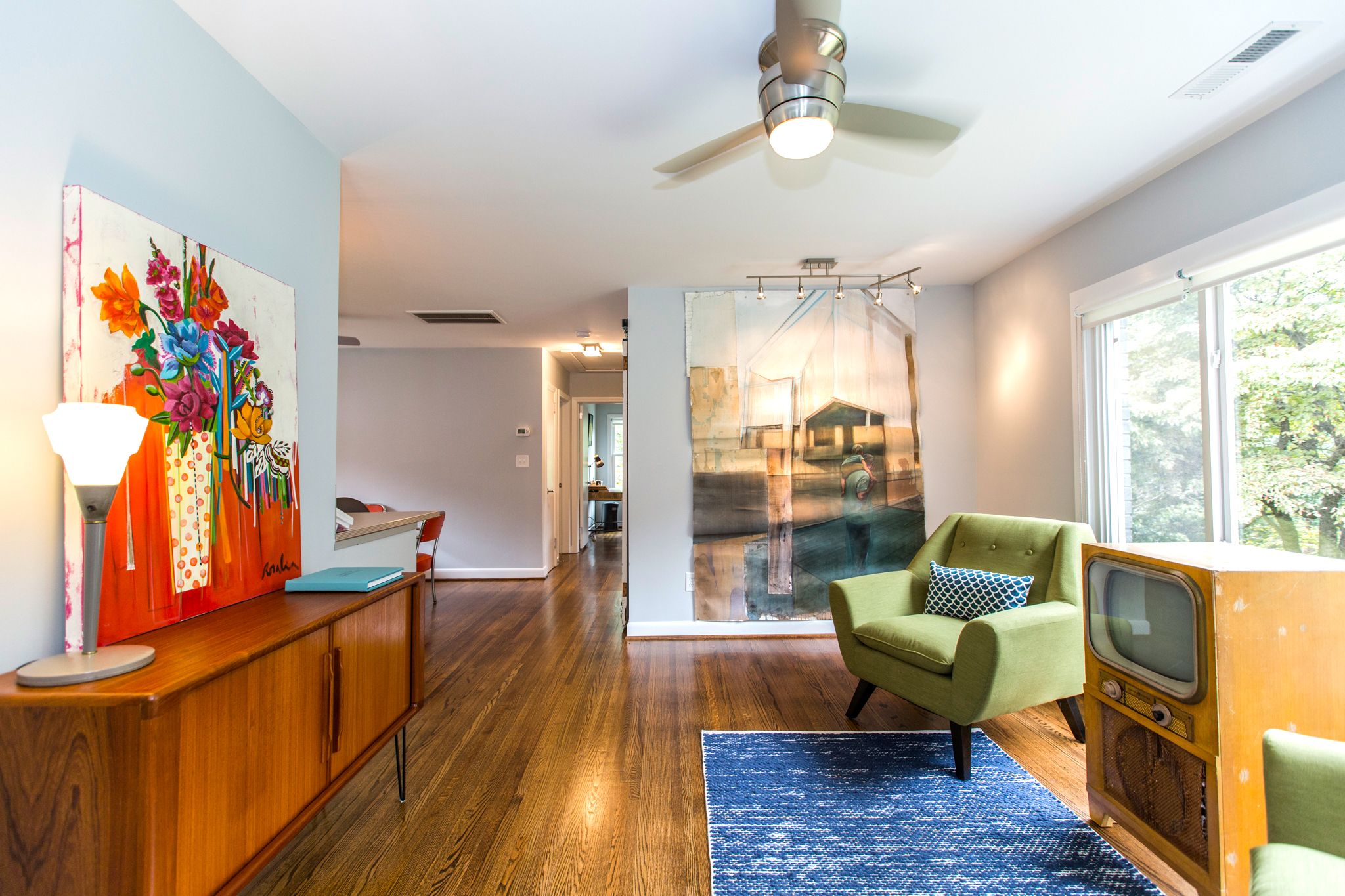 Her art transcends the canvas. Her story “The Magic Kite” was adapted by The Children’s Theatre of Charlotte, and is also performed as part of my “Suitcase Stories” one-woman show, which was featured at the Smithsonian National Museum of American History.
Her art transcends the canvas. Her story “The Magic Kite” was adapted by The Children’s Theatre of Charlotte, and is also performed as part of my “Suitcase Stories” one-woman show, which was featured at the Smithsonian National Museum of American History.
She combines her creative process with community engagement speaking at a variety of events. It’s a practice she calls “Artivism”
“I have a strong track record of successful collaboration with the ASC in community arts programming,” said Rosalia. “My art promotes dialogue around social justice issues and community concerns, and brings together a diverse citizenry through community-based, grassroots collaboration.”
You might recognize her name from her work with The Community School of the Arts, LaCa Projects, UNCC and Johnson and Wales University. Maybe you’ve seen the Red Calaca Mobile Art Studio, a 24’ “Art Truck” she takes into communities underserved by cultural institutions.
She spreads her passion to others through her art-making workshops. “I love to take the history, vision, and character of a community and represent it with my art. I strongly believe in the transformational power of public art and in the use of art as a connector of communities and a method of enriching societies,” said Rosalia.
Because that’s just how she is. She is a powerhouse of talent, leaving the world better than she found it.
